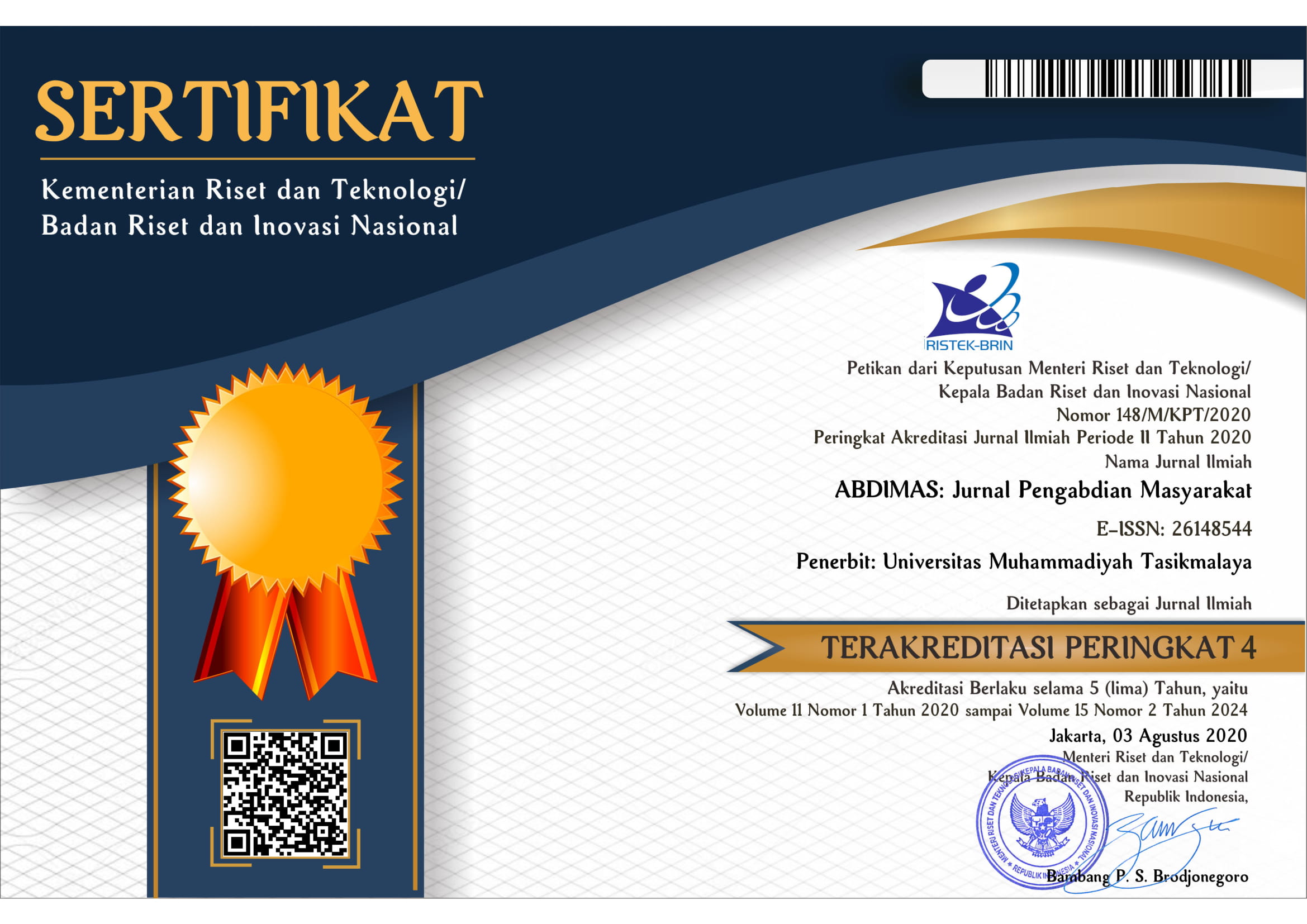Learning Innovation and Assistive Technology for Students with Special Needs in Higher Education
DOI:
https://doi.org/10.35568/abdimas.v5i1.1741Keywords:
inovasi pembelajaran, teknologi bantu, berkebutuhan khususAbstract
Communication technology has been very developed in Indonesia. Everything can be accessed and enjoyed easily. Someone in Sabang can easily communicate with someone in Merauke because of the sophistication of today’s technology. Persons with disabilities also have the same rights and obligations as other human beings. However, they often have limitations to make many humans seem to alienate them. Even though they also have the right to get a good education and quality learning. Currently, people with disabilities worldwide reach 1 billion people or 12% of the world’s population, and 80% are in developing countries. According to the Indonesian Ministry of Social Affairs records, in 2011, the number of people with disabilities in Indonesia reached 7 million people, or about 3% of the total population in Indonesia, which amounted to 238 million. According to Law No. 4 of 1997 concerning persons with disabilities, persons with disabilities are defined as any person who has physical and mental disorders, which can interfere or become obstacles and obstacles for him to perform properly, consisting of persons with physical disabilities, persons with mental disabilities. , people with physical and mental disabilities
Downloads
References
Alherz, A., Tsuruta, N., & Kondo, K. (2020). Multiple-character Animation Systems for Children at Different Educational Stages. International Journal of Asis Digital Art & Design, 1–7.
Bulkani, Fatchurahman, M., Adella, H., & Setiawan, M. A. (2022). Development of Animation Learning Media Based on Local Wisdom to Improve Student Learning Outcomes in Elementary Schools. International Journal of Instruction, 15(1), 55–72. https://doi.org/https://e-iji.net/volumes/368-onlinefirst
Fatchurahman, M., Setiawan, M. A., & Karyanti, K. (2021). The development of group healing storytelling model in multicultural counselling services in Indonesian schools: Examination of disciplinary cases. The Education and Science Journal, 23(4), 157–180. https://doi.org/10.17853/1994-5639-2021-4-157-180
Hai, N. X., Villa, R. A., Van Tac, L., Thousand, J. S., & Muc, P. M. (2020). Inclusion in Vietnam: More than a quarter century of implementation. International Electronic Journal of Elementary Education, 12(3), 257–264. https://doi.org/10.26822/iejee.2020358219
McCorkle, W. D. (2020). The relationship between teachers’ grade level and views on immigration and immigrant students. Journal of Social Studies Education Research, 11(1), 21–41.
Merchant, W., Read, S., D’Evelyn, S., Miles, C., & Williams, V. (2020). The insider view: tackling disabling practices in higher education institutions. Higher Education, 80(2), 273–287. https://doi.org/10.1007/s10734-019-00479-0
Mumpuniarti, M., Handoyo, R. R., Pinrupitanza, D. T., & Barotuttaqiyah, D. (2020). Teacher’s pedagogy competence and challenges in implementing inclusive learning in slow learner. Cakrawala Pendidikan, 39(1), 217–229. https://doi.org/10.21831/cp.v39i1.28807
Priyono, D., Suriadi, S., Pramana, Y., & Junaidi, J. (2022). Development of a Health Education Application Smartphone-based FoCED to Increase Knowledge About Foot Care In Patients With Diabetes Mellitus. ABDIMAS: Jurnal Pengabdian Masyarakat, 4(2), 685–688. https://doi.org/10.35568/abdimas.v4i2.1178
Toquero, C. M. D. (2020). Inclusion of people with disabilities amid COVID-19: Laws, interventions, recommendations. Multidisciplinary Journal of Educational Research, 10(2), 158–177. https://doi.org/10.447/remie.2020.5877
Ullah, F., Wang, J., Farhan, M., Jabbar, S., Wu, Z., & Khalid, S. (2020). Plagiarism detection in students’ programming assignments based on semantics: multimedia e-learning based smart assessment methodology. Multimedia Tools and Applications, 79(13–14), 8581–8598. https://doi.org/10.1007/s11042-018-5827-6
Winatra, A., Sunardi, S., Khair, R., Idris, I., & Santosa, A. (2019). Aplikasi Augmented Reality (Ar) Sebagai Media Edukasi Pengenalan Bentuk Dan Bagian Pesawat Berbasis Android. Jurnal Teknologi Informasi, 3(2), 212. https://doi.org/10.36294/jurti.v3i2.1217














